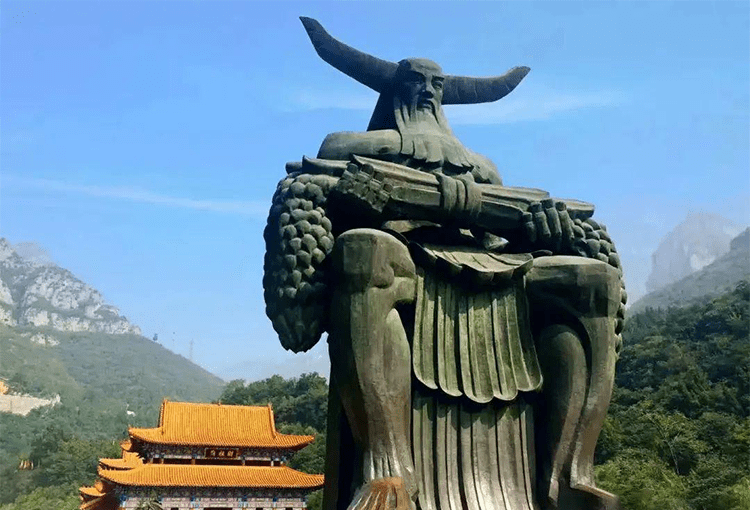Shennong Mountain Travel Guide: Hike the Dragon Spine Great Wall
Hidden in the folded southern foothills of the Taihang Mountains lies a time-forgotten landscape—Shennong Mountain. This national 5A scenic area reads like an epic carved into cliffs: an 11.5 km Dragon Spine Great Wall rises like a dragon in flight, 16,000 ancient dragon-scale pines whisper the myths of Emperor Yan, and atop 1,028 m Zijin Peak the sacred drumbeats of ancient sky rituals still seem to echo.
1. Dragon Spine Great Wall: Walking on the Back of a Dragon
The soul of Shennong Mountain is the Dragon Spine Great Wall, dubbed one of China’s supreme ridge lines. This 11.5-kilometre limestone crest is a geological wonder—at its narrowest the jagged ridge is under 3 metres wide, with vertical drops of well over 100 metres on both sides, as if a blade has split the clouds. Hiking here places you on karst formations sculpted over millennia, with sweeping Taihang panoramas that rise and fall like ocean waves.
Best time to visit: clear autumn mornings (September–November) when mist wraps the ridge into a “sky road,” and right after winter snow when the dragon-scale pines and ice formations create ink-wash landscapes. Less fit hikers can take the cableway to Tianmen (One-Day Gate) and then hike about 1.5 hours to the summit.
2. Dragon-Scale Pines and Zijin Peak: Living Ancient Code
More than 16,000 dragon-scale pines in the park are botanical living fossils. Their bark splits into scale-like plates, and local legend says these trees sprouted from the medicinal seeds spilled by Shennong—Emperor Yan—when he tested herbs. The so-called “Emperor Pine” reaches 39 metres and requires three people to fully embrace its trunk; its scaly texture gleams with a bronze sheen in sunlight.
Reaching Zijin Peak (Purple-Gold Peak) brings you to the legendary altar where Shennong once performed sky rites. Today’s Taiji Hall and Shennong Altar are Ming–Qing reconstructions, but historical records in the Huaicing Gazetteer note a ritual tradition stretching back three thousand years. From the altar ruins you can see the mountain forming a natural Taiji pattern, echoing the ancient philosophy of harmony between heaven and humanity.

3. A Symphony of Natural Wonders and Cultural Treasures
Beyond the main attractions, the park hides many delights:
– White Pine Ridge: 3,000 acres of pristine white-barked pine that unfurl emerald waves each April
– Peach Blossom Creek: a March corridor of wild peach blossoms and a rare red-stone gorge carved by running water
– Yunyang Temple: a cliff-hanging temple first built in the Tang dynasty, home to a Northern Wei cliff inscription called “Taihang’s First Carving”
– Qingjing Palace: a Yuan-dynasty Taoist site with exquisite glazed roof ornaments and an octagonal carved caisson ceiling
The annual Emperor Yan (Yandi) Ceremony on the lunar March 8 is an unmissable cultural festival. This millennia-old national intangible heritage event features ancient music, ritual dances, and a hundred-herb blessing ceremony. Visitors can join workshops to craft a symbolic “Shennong Sheaf,” a charm celebrating bountiful harvests.
4. Practical Guide: How to Conquer this Taihang Holy Mountain?
Transportation:
– By car: about a 2-hour drive from Zhengzhou via the Jiaotong Expressway to the scenic area’s East Gate
– By train: from Qinyang (Qinyang) Railway Station take the tourist shuttle bus (operates hourly 06:30–17:00)
Tickets & routes:
– Peak season (Mar–Nov): admission CNY 80 (includes park shuttle); one-way cableway CNY 40
– Recommended one-day highlights loop: park shuttle → cableway to Tianmen → hike the Dragon Spine Great Wall → Zijin Peak → descend via the White Pine Ridge trail

Tips:
– The Dragon Spine section requires scrambling; wear shoes with good grip
– Summit temperature swings up to 10°C—bring a windbreaker even in summer
– The park offers Chinese–English electronic audio guides (deposit CNY 200)
When the setting sun gilds the Dragon Spine Great Wall, you understand why ancient people said it “connects heaven and taps the earth.” Shennong Mountain is more than dramatic peaks and ancient pines—it speaks through eight thousand years of civilization. This underestimated world-class landscape waits for adventurous travelers to unlock its full secrets.


